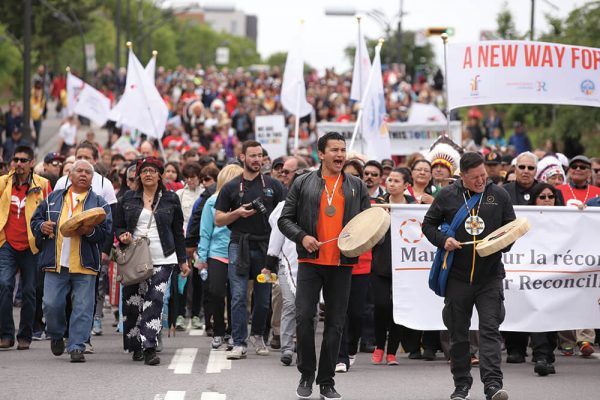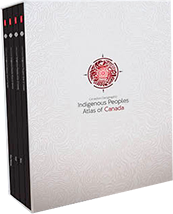Forewords

In this atlas, you will find outstanding reference maps of Indigenous Canada, as well as a section devoted to Truth and Reconciliation, including detailed pages on many aspects of the topic with contemporary and historical photography, maps and more. There’s also a glossary of common Indigenous terms. This atlas was created by The Royal Canadian Geographical Society in conjunction with the Assembly of First Nations, Inuit Tapiriit Kanatami, the Métis Nation, the National Centre for Truth and Reconciliation and Indspire.
Armageddon in Our Bones, Utopia in Our Souls
We the first peoples of this land have Armageddon in our bones and utopia in our souls. Generations of trauma are imprinted on our chromosomes, linking our DNA to the sorrow of our ancestors. Halcyon memories of continent-wide freedom resonate from our songs, shaking the souls of our Elders and calling our children to dance. We have inherited the dreams and nightmares of forebears — hereditary chiefs and abducted children, fierce warriors and ingenious artists, loving grandmothers and vagabond uncles.
Maps
Cartography has long been an imperial enterprise used to claim territory and to imagine the geographic reach of empires. In its imperial usage, map-making is an instrument of Indigenous erasure. It reconceptualizes the world in ways that ignore ongoing Indigenous presence, usage and governance. When Canada sent surveyors to the Prairies in the 1870s — its most ambitious mapping project — it reorganized the prairie world into 640-acre (2.6 sq. km) sections without regard for natural landmarks or Indigenous territorial boundaries.
Nunannguaq
Nunannguaq is the Inuit word for map. It means, “representation of land.” Like other peoples around the world, we have always carried maps in our minds. I come from Rankin Inlet, Nunavut, these days. I have been carrying around a map of the area in my mind since my uncle, Ussak, told me, “Always look behind you so you will know how to get back.” That was shortly after we arrived there in 1960. My map has been growing since.

Order now
from Amazon.ca or Chapters.Indigo.ca or contact your favourite bookseller or educational wholesaler




